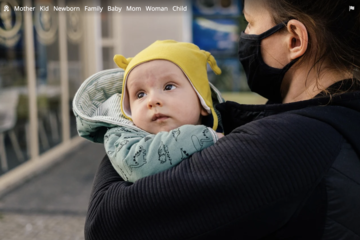We found 200 results that contain "nb"
Posted on: Software testing

Agile methodologies frameworks
Agile project management is not a singular framework — rather, it can be used as an umbrella term to include many different frameworks. Agile project management can refer to terms including Scrum, Kanban, Extreme Programming (XP), and Adaptive Project Framework (APF).
Posted on: #iteachmsu


A class is a user-defined blueprint or prototype from which objects are created. -- Edited
A class is a user-defined blueprint or prototype from which objects are created. It represents the set of properties or methods that are common to all objects of one type. Using classes, you can create multiple objects with the same behavior instead of writing their code multiple times. This includes classes for objects occurring more than once in your code. https://www.javatpoint.com/microprocessor-introduction In general, class declarations can include these components in order:
Modifiers: A class can be public or have default access (Refer to this for details).
Class name: The class name should begin with the initial letter capitalized by convention.
Superclass (if any): The name of the class’s parent (superclass), if any, preceded by the keyword extends. A class can only extend (subclass) one parent.
Interfaces (if any): A comma-separated list of interfaces implemented by the class, if any, preceded by the keyword implements. A class can implement more than one interface.
Body: The class body is surrounded by braces, { }.
An object is a basic unit of Object-Oriented Programming that represents real-life entities. A typical Java program creates many objects, which as you know, interact by invoking methods. The objects are what perform your code, they are the part of your code visible to the viewer/user. An object mainly consists of:
State: It is represented by the attributes of an object. It also reflects the properties of an object.
Behavior: It is represented by the methods of an object. It also reflects the response of an object to other objects.
Identity: It is a unique name given to an object that enables it to interact with other objects.
Method: A method is a collection of statements that perform some specific task and return the result to the caller. A method can perform some specific task without returning anything. Methods allow us to reuse the code without retyping it, which is why they are considered time savers. In Java, every method must be part of some class, which is different from languages like C, C++, and Python.
Modifiers: A class can be public or have default access (Refer to this for details).
Class name: The class name should begin with the initial letter capitalized by convention.
Superclass (if any): The name of the class’s parent (superclass), if any, preceded by the keyword extends. A class can only extend (subclass) one parent.
Interfaces (if any): A comma-separated list of interfaces implemented by the class, if any, preceded by the keyword implements. A class can implement more than one interface.
Body: The class body is surrounded by braces, { }.
An object is a basic unit of Object-Oriented Programming that represents real-life entities. A typical Java program creates many objects, which as you know, interact by invoking methods. The objects are what perform your code, they are the part of your code visible to the viewer/user. An object mainly consists of:
State: It is represented by the attributes of an object. It also reflects the properties of an object.
Behavior: It is represented by the methods of an object. It also reflects the response of an object to other objects.
Identity: It is a unique name given to an object that enables it to interact with other objects.
Method: A method is a collection of statements that perform some specific task and return the result to the caller. A method can perform some specific task without returning anything. Methods allow us to reuse the code without retyping it, which is why they are considered time savers. In Java, every method must be part of some class, which is different from languages like C, C++, and Python.
Authored by: Vijayalaxmi Mhetre
Disciplinary Content
Posted on: #iteachmsu

A student exchange program may involve international travel, but does not necessarily require the st
Checking Your Course Materials & Resources
In anticipation of starting a new semester it is always a good idea to check the materials you plan on using for your course. Here are a couple of pitfalls that could happen, and how you might protect yourself.
1) Where did that go?
Sometimes we link to library resources such as journal articles, books, or media and we expect that the link will be ‘good’ in perpetuity. However, over time things shift and change. It is a good idea to use stable links to ensure that your resources will be available to students when they select the link you have provided. Here is the library resource on using stable links in your course - https://libguides.lib.msu.edu/stablelinks
2) It’s not the limits we set…
Some resources have a limit to the number of individuals who can access the resource at one time. It’s kind of like the olden days when there were only a few copies of a book in the library for hundreds of students. The same occurs in some digital resources. It is a good idea to ensure that your resources don’t have any restrictions, and if they do, that you are aware of these prior to adding these to your final syllabus or course reading list. Here is a library article to help with these situations - https://libguides.lib.msu.edu/c.php?g=917727&p=6913084
3) Deadlines and other support help
If you are experiencing an issue with access or availability to course resources from the library, you should contact them as soon as possible in the planning process. MSU librarians are very skilled and knowledgeable about the availability of resources and suggestions for alternatives when necessary. Here is a link to help with course materials - https://libguides.lib.msu.edu/c.php?g=917727&p=6913084
The aforementioned points are related to resources and materials available through the MSU library. It is always a good idea to check your links and access to third-party resources and materials that you have ‘used in the past’. Over time open and free resources can become fee-for-access (e.g., you will receive a 401 Unauthorized error), as well as being removed from the web entirely (e.g., the dreaded 404 ‘Not Found’ error). Checking these resources early can help you avoid last minute panic and scramble to find alternatives for your course.
In anticipation of starting a new semester it is always a good idea to check the materials you plan on using for your course. Here are a couple of pitfalls that could happen, and how you might protect yourself.
1) Where did that go?
Sometimes we link to library resources such as journal articles, books, or media and we expect that the link will be ‘good’ in perpetuity. However, over time things shift and change. It is a good idea to use stable links to ensure that your resources will be available to students when they select the link you have provided. Here is the library resource on using stable links in your course - https://libguides.lib.msu.edu/stablelinks
2) It’s not the limits we set…
Some resources have a limit to the number of individuals who can access the resource at one time. It’s kind of like the olden days when there were only a few copies of a book in the library for hundreds of students. The same occurs in some digital resources. It is a good idea to ensure that your resources don’t have any restrictions, and if they do, that you are aware of these prior to adding these to your final syllabus or course reading list. Here is a library article to help with these situations - https://libguides.lib.msu.edu/c.php?g=917727&p=6913084
3) Deadlines and other support help
If you are experiencing an issue with access or availability to course resources from the library, you should contact them as soon as possible in the planning process. MSU librarians are very skilled and knowledgeable about the availability of resources and suggestions for alternatives when necessary. Here is a link to help with course materials - https://libguides.lib.msu.edu/c.php?g=917727&p=6913084
The aforementioned points are related to resources and materials available through the MSU library. It is always a good idea to check your links and access to third-party resources and materials that you have ‘used in the past’. Over time open and free resources can become fee-for-access (e.g., you will receive a 401 Unauthorized error), as well as being removed from the web entirely (e.g., the dreaded 404 ‘Not Found’ error). Checking these resources early can help you avoid last minute panic and scramble to find alternatives for your course.
Authored by: Shweta patil
Disciplinary Content
Posted on: #iteachmsu


Greek Articles
Game gerdara
If you're trying to learn Greek Articles you will find some useful resources including a course about Definite and Indefinite Articles... to help you with your Greek grammar. Try to concentrate on the lesson and notice the pattern that occurs each time the word changes its place. Also don't forget to check the rest of our other lessons listed on Learn Greek. Enjoy the rest of the lesson!
If you're trying to learn Greek Articles you will find some useful resources including a course about Definite and Indefinite Articles... to help you with your Greek grammar. Try to concentrate on the lesson and notice the pattern that occurs each time the word changes its place. Also don't forget to check the rest of our other lessons listed on Learn Greek. Enjoy the rest of the lesson!
Authored by: Chathu
Disciplinary Content
Posted on: #iteachmsu


Greek Articles
Game gerdara
If you're trying to learn Greek Articles you will find some useful resources including a course about Definite and Indefinite Articles... to help you with your Greek grammar. Try to concentrate on the lesson and notice the pattern that occurs each time the word changes its place. Also don't forget to check the rest of our other lessons listed on Learn Greek. Enjoy the rest of the lesson!
If you're trying to learn Greek Articles you will find some useful resources including a course about Definite and Indefinite Articles... to help you with your Greek grammar. Try to concentrate on the lesson and notice the pattern that occurs each time the word changes its place. Also don't forget to check the rest of our other lessons listed on Learn Greek. Enjoy the rest of the lesson!
Authored by: Chathu
Disciplinary Content
Posted on: #iteachmsu


Graphical user interface
graphical user interface:
The graphical user interface (GUI is a form of user interface that allows users to interact with electronic devices through graphical icons and audio indicators such as primary notation, instead of text-based user interfaces, typed command labels, or text navigation. GUIs were introduced in reaction to the perceived steep learning curve of command-line interfaces (CLIs), which require commands to be typed on a computer keyboard.
The actions in a GUI are usually performed through direct manipulation of the graphical elements. Beyond computers, GUIs are used in many handheld mobile devices such as MP3 players, portable media players, gaming devices, smartphones, and smaller household, office, and industrial controls. The term GUI tends not to be applied to other lower-display resolution types of interfaces, such as video games ), or not including flat screens, like volumetric displays.
User interface and interaction design:
Designing the visual composition and temporal behavior of a GUI is an important part of software application programming in the area of human-computer interaction. Its goal is to enhance the efficiency and ease of use for the underlying logical design of a stored program, a design discipline named usability. Methods of user-centered design are used to ensure that the visual language introduced in the design is well-tailored to the tasks.
The visible graphical interface features of an application are sometimes referred to as chrome or GUI (pronounced gooey) Typically, users interact with information by manipulating visual widgets that allow for interactions appropriate to the kind of data they hold. The widgets of a well-designed interface are selected to support the actions necessary to achieve the goals of users.
The graphical user interface (GUI is a form of user interface that allows users to interact with electronic devices through graphical icons and audio indicators such as primary notation, instead of text-based user interfaces, typed command labels, or text navigation. GUIs were introduced in reaction to the perceived steep learning curve of command-line interfaces (CLIs), which require commands to be typed on a computer keyboard.
The actions in a GUI are usually performed through direct manipulation of the graphical elements. Beyond computers, GUIs are used in many handheld mobile devices such as MP3 players, portable media players, gaming devices, smartphones, and smaller household, office, and industrial controls. The term GUI tends not to be applied to other lower-display resolution types of interfaces, such as video games ), or not including flat screens, like volumetric displays.
User interface and interaction design:
Designing the visual composition and temporal behavior of a GUI is an important part of software application programming in the area of human-computer interaction. Its goal is to enhance the efficiency and ease of use for the underlying logical design of a stored program, a design discipline named usability. Methods of user-centered design are used to ensure that the visual language introduced in the design is well-tailored to the tasks.
The visible graphical interface features of an application are sometimes referred to as chrome or GUI (pronounced gooey) Typically, users interact with information by manipulating visual widgets that allow for interactions appropriate to the kind of data they hold. The widgets of a well-designed interface are selected to support the actions necessary to achieve the goals of users.
Authored by: Rupali
Posted on: #iteachmsu


Finance
Corporate finance is the division of finance that deals with how corporations deal with funding sources, capital structuring, and investment decisions. Corporate finance is primarily concerned with maximizing shareholder value through long and short-term financial planning and the implementation of various strategies.
Authored by: Divya Sawant
Disciplinary Content
Posted on: #iteachmsu


robot pet that can interact with humans.
In the intersection of space travel and robotics, Jihee Kim introduces Laika — a concept design for a life-like, AI robot pet that can interact with humans. Laika has been designed for upcoming space projects such as NASA’s Artemis and Moon to Mars missions set for 2025-2030, envisioned as the ultimate companion for space explorers as it caters to both their physical and emotional well-being while they are away from home. Unlike the aggressive robotic dogs currently available on the market, Jihee Kim has designed Laika with a friendly and organic finish that enables it to connect to its human counterpart on an emotional level when in use while monitoring their health conditions and assisting them in emergencies. Beyond space missions, this approachable design allows Laika to integrate into domestic contexts.
Image :
video link : Embedded URL test :
Table :
Sr NO
Assignee
Task
Cat 1
Rohit
Test 1
Cat 2
Shweta
Test 2
Numbering :
Number 1
Number 2
Bullets :
Bullets 1
Bullets 2
Bullets 3
URL : https://www.designboom.com/technology/life-like-ai-robot-dog-laika-space-travelers-jihee-kim-11-19-2023/
Image :
video link : Embedded URL test :
Table :
Sr NO
Assignee
Task
Cat 1
Rohit
Test 1
Cat 2
Shweta
Test 2
Numbering :
Number 1
Number 2
Bullets :
Bullets 1
Bullets 2
Bullets 3
URL : https://www.designboom.com/technology/life-like-ai-robot-dog-laika-space-travelers-jihee-kim-11-19-2023/
Authored by: Vijayalaxmi vishwanath mali
Posted on: #iteachmsu

Achieving work life balance is possible with effective time management. Learning time management tips will not only help you manage your time better but also boost personal productivity. With that said, here are some time management strategies you can try:
https://www.usa.edu/blog/time-management-techniques/
https://www.usa.edu/blog/time-management-techniques/
Posted by: Super Admin
Disciplinary Content
Posted on: #iteachmsu


https://www.usa.edu/blog/time-management-techniques/
https://www.usa.edu/blog/time-management-techniques/
https://www.usa.edu/blog/time-management-techniques/
https://www.usa.edu/blog/time-management-techniques/
https://www.usa.edu/blog/time-management-techniques/
Posted by: Super Admin
Disciplinary Content
Posted on: #iteachmsu


Pomodoro Technique
The Pomodoro Technique was created by entrepreneur and author Francesco Cirillo. This technique uses a timer to break down your work into intervals. Each interval is known as a Pomodoro, named after the tomato-shaped timer that Cirillo created.
https://twitter.com/
How it works:
https://www.usa.edu/blog/time-management-techniques/
Choose a task you need to get done.
Set a timer (e.g., for 25 mins).
Focus on the task at hand.
When the timer rings, put a checkmark on a piece of paper.
Take a short break: Take a break for about three to five minutes. Go for a walk, grab a cup of coffee, do something non-work-related to give your brain a break.
Repeat steps two to five: Once you have completed this process four times, you can begin to take longer breaks (20–30 mins).
https://www.usa.edu/blog/time-management-techniques/
The Pomodoro Technique was created by entrepreneur and author Francesco Cirillo. This technique uses a timer to break down your work into intervals. Each interval is known as a Pomodoro, named after the tomato-shaped timer that Cirillo created.
https://twitter.com/
How it works:
https://www.usa.edu/blog/time-management-techniques/
Choose a task you need to get done.
Set a timer (e.g., for 25 mins).
Focus on the task at hand.
When the timer rings, put a checkmark on a piece of paper.
Take a short break: Take a break for about three to five minutes. Go for a walk, grab a cup of coffee, do something non-work-related to give your brain a break.
Repeat steps two to five: Once you have completed this process four times, you can begin to take longer breaks (20–30 mins).
https://www.usa.edu/blog/time-management-techniques/
Posted by: Miller brother
Disciplinary Content
Posted on: #iteachmsu

Join with :
https://www.bigcommerce.com/ecommerce-answers/what-is-an-alt-tag-and-how-does-it-impact-seo/
https://www.bigcommerce.com/ecommerce-answers/what-is-an-alt-tag-and-how-does-it-impact-seo/
Posted by: Chathuri Super admin..
Disciplinary Content
Posted on: #iteachmsu


https://moz.com/blog/absolute-beginners-guide-to-google-analytics
Why you need Google Analytics Do you have a blog? Do you have a static website? If the answer is yes, whether they are for personal or business use, then you need Google Analytics. Here are just a few of the many questions about your website that you can answer using Google Analytics.
Why you need Google Analytics Do you have a blog? Do you have a static website? If the answer is yes, whether they are for personal or business use, then you need Google Analytics. Here are just a few of the many questions about your website that you can answer using Google Analytics.
Posted by: Greg Thomsan
Navigating Context
Posted on: #iteachmsu

it's what people are being asked to https://www.npr.org/2020/10/26/927064268/youre-not-welcome-here-how-social-distancing-can-destroy-the-global-economy
Posted by: Greg Thomsan
Posted on: #iteachmsu

Post 2 https://www.lipsum.com/ Why do we use it? It is a long established fact that a reader will be distracted by the readable content of a page when looking at its layout. The point of using Lorem Ipsum is that it has a more-or-less normal distribution of letters, as opposed to using 'Content here, content here', making it look like readable English. Many desktop publishing packages and web page editors now use Lorem Ipsum as their default model text, and a search for 'lorem ipsum' will uncover many web sites still in their infancy. Various versions have evolved over the years, sometimes by accident, sometimes on purpose (injected humour and the like).
Posted by: Greg Thomsan
Host: MSU Libraries

MSU Family Weekend: Game Labs Open House
For MSU Family Weekend, stop by the Libraries' game labs for some down-time fun. The Gerald M Kline Digital and Multimedia Center (Main Library 4 West) is home to game labs for study and recreation alike! Console games from our collection or yours may be played by individuals or groups in our fully equipped video game labs.
For parking information visit http://maps.msu.edu/interactive.
If you have questions about accessibility or need to request accommodations, please email lib.dl.accessibility@msu.edu.
Navigating Context
Host: MSU Libraries

Research Facilitation Network Lightning talks: Research Support Services at MSU
Join us for insightful talks about research support services available at Michigan State. This session will highlight units assisting researchers throughout their research life cycle. Bring your questions and support needs to contribute to the discussion.
Meeting information: Zoom, September 16 from 3-4PM
Register here!
Navigating Context
Host: MSU Libraries

Intro to Modeling for 3D Printing: TinkerCad Zipper Pull
Get creative with 3D printing in this hands-on beginner workshop at the MSU Libraries Hollander Makerspace—a space where all students can explore, design, and make.
You’ll learn how 3D printing works, design your own custom zipper pull using simple modeling tools in Tinkercad, and watch it print before your eyes. No experience needed—we’ll guide you step by step as you combine shapes to bring your design to life. Your custom zipper pull is yours to keep—use it to fix a broken zipper, personalize your gear, or show off your new tech skills!
Attendees will need to arrive with or be willing to make a free Tinkercad account with a valid email address.
Navigating Context
Host: MSU Libraries

MSU Libraries and The Poetry Room present Olivia Gatwood
Join the MSU Libraries and Lansing’s The Poetry Room for an afternoon of poetry, connection and conversation celebrating student, alumni and community voices. The event opens with performances from the MSU Poetry Club alongside recent alumni, spotlighting emerging talent and the power of being heard. The showcase will be followed by acclaimed poet, author and viral sensation Olivia Gatwood, whose work blends humor, intimacy and sharp social insight. Gatwood will share poems as well as excerpts from her 2024 novel “Whoever You Are, Honey,” offering an unfiltered look into her craft and creative journey. The afternoon will conclude with a Q&A — a mix of moderated conversation and audience participation — creating a rare opportunity to connect with one of today’s most dynamic literary voices.
Olivia Gatwood is the author of two poetry collections, “New American Best Friend” and “Life of the Party,” and co-writer of Adele’s music video “I Drink Wine.” She has received international recognition for her poetry, writing workshops and work as a Title IX-compliant educator in sexual assault prevention and recovery. Her performances have been featured on HBO, MTV, VH1, the BBC and more, with poems appearing in “The Poetry Foundation,” “Lambda Literary” and “The Missouri Review.” Originally from Albuquerque, she now lives in Los Angeles.
Event is free and open to all.
Navigating Context
Host: MSU Libraries

Data Management Plans: Yes, you need one and here is how to create them
An overview of why data management plans are important and often required, and how to develop one. We will look at the items commonly included in all data management plans regardless of agency/institutional requirements, some examples of specific funding agency templates and review what resources are available to help you draft your plan.
Navigating Context
Host: MSU Libraries

Intro to VR @DSL: Drop-in Session
Curious About Virtual Reality?
Whether you're completely new to VR or already exploring it for research, storytelling, gaming, art, or education our Drop-in VR sessions are for you! Stop by the Digital Scholarship Lab to try out one of our HTC Vive XR Elite headsets, get hands-on experience and learn about our VR Headset Loan Program.
Intro to VR @ DSL is here to help you explore the possibilities of Virtual Reality, whether you're looking to:
- Experience immersive gameplay: for fun, fitness, storytelling, or team-building
- Create in 3D: With sculpting, painting, designing and more
- Explore the world: travel virtually to natural landscapes, historical sites, landmarks and more
- Try a simulated experience: from floating in space to riding a roller coaster, even performing surgery
No experience is needed, just bring your curiosity and dive in!
Drop-In VR Sessions
Sept 10th, Sept 24th, Oct 29th, & Nov 19th
From 4:00 PM – 7:00 PM
For parking information visit http://maps.msu.edu/interactive.
If you have questions about accessibility or need to request accommodations, please email lib.dl.accessibility@msu.edu.
Navigating Context
Host: MSU Libraries

The Lucky Ones: A Memoir with Author Zara Chowdhary
Please join us for a special Muslim Journeys session led by author Zara Chowdhary. Chowdhary’s memoir recounts surviving the 2002 massacres at Ahmedabad, India, and delves into the history of her multigenerational Muslim family. Free and open to the public. All are welcome, light refreshments served.
More information, including how to obtain the book at: https://libguides.lib.msu.edu/muslimstudies/muslimjourneys.
Co-sponsored by: MSU Creative Writing Program, Islamic Society of Greater Lansing, One Love Global
For parking information visit http://maps.msu.edu/interactive.
Persons with disabilities may request accommodations by emailing Lib.DL.accessibility@msu.edu.
Navigating Context
Host: MSU Libraries

Film Screening: I’m Still Here (Ainda estou aqui)
Ainda Estou Aqui (I’m Still Here), winner of the Best International Feature Film at the 97th Academy Awards (2025), tells the powerful true story of Rubens Paiva’s arrest and disappearance in 1970s Rio de Janeiro and his wife Eunice’s relentless fight for the truth amid Brazil’s military dictatorship (1964–1985).
Based on the novel by Marcelo Rubens Paiva—son of Rubens and Eunice—the film portrays the Paiva family’s struggle to uncover Rubens’ fate in a nation gripped by political repression. The trauma of her husband's disappearance drives Eunice to study law, ultimately becoming a leading advocate for Indigenous rights in Brazil.
We invite the MSU community and the general public to a free screening and discussion on political oppression, censorship, fear, trauma, democratic challenges, and social upheaval. Faculty members will facilitate the conversation, encouraging critical engagement with the film’s historical and contemporary relevance.
This event is free and open to the public.
Agenda
5:30 PM: Screening to be presented by Janette Nuñez (MSU Libraries) and Saulo Gouveia (Romance and Classical Studies)
7:45 PM (immediately after the screening): Discussion panel featuring:
a. Peter Beattie, History
b. Saulo Gouveia, Romance and Classical Studies
c. María Isabel Espinoza, Sociology
d. Rocío Quispe Agnoli, Romance and Classical Studies
Navigating Context


